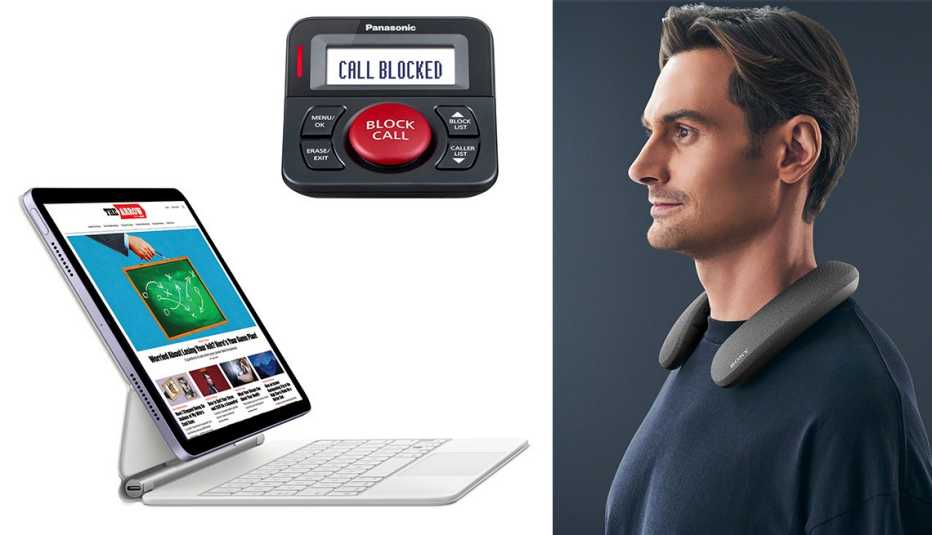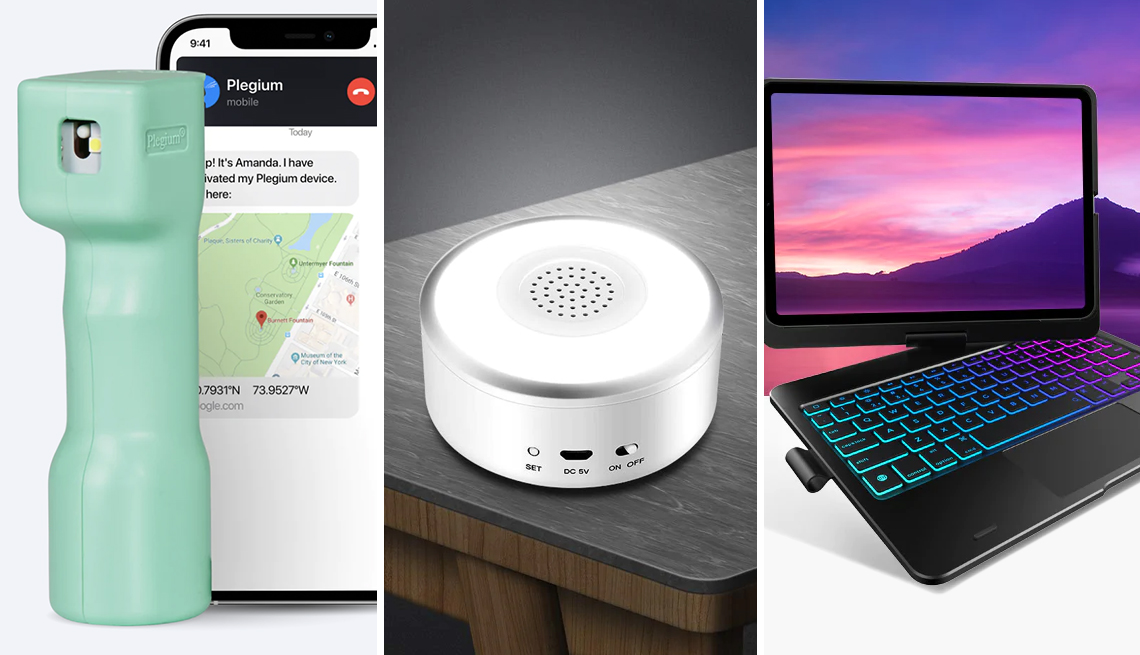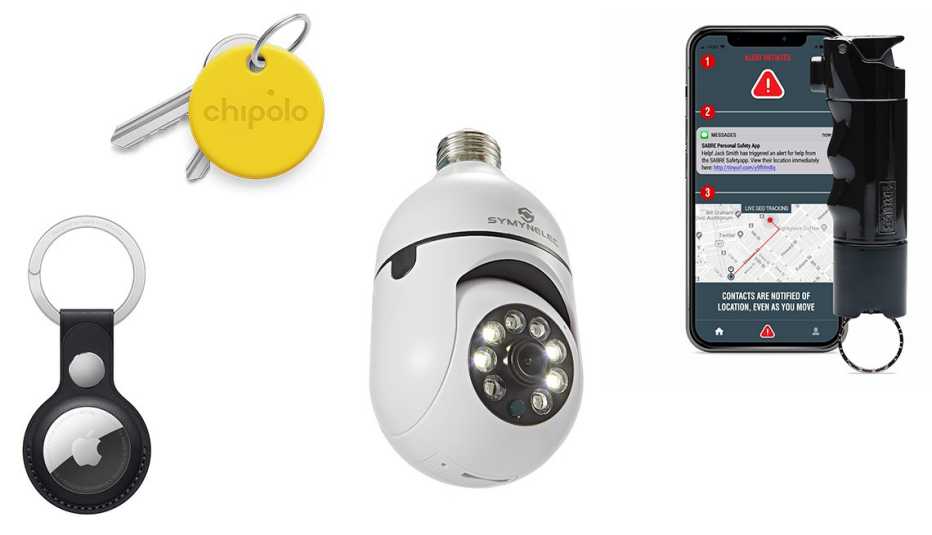Staying Fit
While you might say no to many of the new, gee-whiz devices that you see online and in stores, some are worth a second look.
Four journalists who specialize in technology reporting looked at new products that could offer legitimate benefits to users age 50 and older. They personally tried the products and offer their impressions.


AARP Membership— $12 for your first year when you sign up for Automatic Renewal
Get instant access to members-only products and hundreds of discounts, a free second membership, and a subscription to AARP the Magazine.
Please note that AARP does not endorse products or companies. So consider this a sampler that shows you a slice of what’s out there.


1. Lightweight tablets get benefits of a laptop
The right stand can make using a tablet feel almost like you’re on a laptop. The Magic Keyboard, starting at $300, from Apple is a prime companion for the iPad Pro or iPad Air. The tablet snaps into place and the stand features a built-in trackpad. Still, with the added cost and extra weight, you’re close to just owning a laptop.
While many Apple enthusiasts prefer to buy only Apple accessories, a much less expensive product with many of the same features is the Typecase Touch from $70. The keys aren’t as sleek, but they are backlit. I won’t be giving up my laptop yet, but I can see a future where I might.
— Lexi Pandell
2. A device to block phone scammers
If you have a landline phone, it can be tough to block spam and robocalls. The Panasonic Call Blocker, $110, connects to your phone and comes with a pre-blocked database of 14,000 robocall and telemarketing numbers.
When a suspicious call does get through, hit the big red button to block it forever. Another option is AT&T’s cordless answering system with smart call blocker, $45, which allows you to blacklist numbers. These are not perfect solutions — robocallers often mask their true numbers and location — but I found that the big red button makes it satisfying to reject calls.
— Risha Gotlieb
3. TV sound that’s tailored to your ears
If you jack up your TV volume to hear the dialogue better and revel in surround sound but annoy your family or even your condo neighbor, one solution is a wireless neckband speaker.
These connect to the optical output of your TV, which means the audio syncs to the video with no lag. And they can be comfortably used while wearing hearing aids.









































































